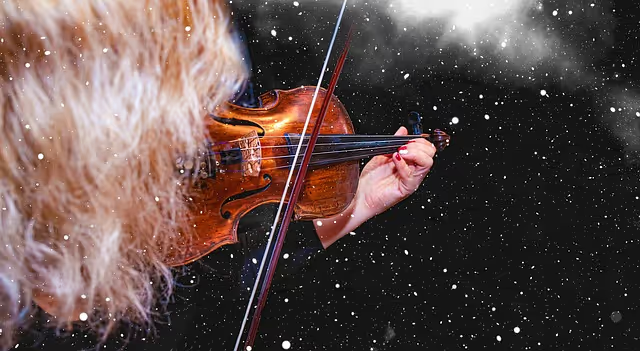Invest in bows: A violin bow for the price of a luxury limousine?

Sure — exclusive violins such as a Stradivarius or Guarneri del Gesù are among the most sought after and sometimes profitable instrument investments. What many investors don't know, however, is that violin bows also “have music in them.” Because the price range for high-quality bows ranges from less than a hundred to well over a hundred thousand euros - depending on quality, history and demand. Find out what makes a unique violin bow stand out and why bows are also interesting for investors.
How is a valuable violin bow made?
The violinist Giovanni Battista Viotti coined the motto “The violin, that is the bow.” Because “The bow can actually influence the timbre of the instrument,” explains Anne-Sophie Mutter. For amateur violinists, the difference between a cheap and a high-quality bow may be less significant. Professional musicians, on the other hand, specifically select the violin bow that matches the violin and the piece of music. Or as Anne-Sophie Mutter once put it: “At a Brahms concert with a large orchestra, I'm looking for a bow that goes deeper into the strings — like tires that prevent aquaplaning and have great curves.”
In general, the bow is used to make the strings and the body of stringed instruments vibrate and thus produce a sound. Put simply, a “hardwood rod” is strung with horse hair and produces a sound by stroking the horsehair of the bow back and forth on the strings. To increase the friction between strings and horsehair, the bow covering is regularly coated with rosin (bow resin) rubbed in.
What sounds like a relatively simple construction method in theory is a science in itself in practice. Denn There are major differences in the quality of bows, which are usually based on the factors of material, decoration and history.
- Material:
Among experts, for example, the prevailing opinion is that the best bows can only be made from one material: pernambuk wood, also known as pau-brasil. Because only by using the Brazilian national tree would a violin get its warm timbre. It has been used since the 18th century to make some of the world's best sounding violin bows and was once the preferred material for French bow makers such as Tourte, Pajot, and Peccatte. This is because pernambuk wood can be cut very thin and yet remains stable and supple. Today, however, for reasons of conservation, pernambuk wood is barely available anymore, which has driven the price of these violin bows to an all-time high.
Fiddle bows made from so-called Brazilian wood - a collective term for wood that can come from various tropical trees - are generally a bit cheaper, but can vary significantly in quality.
Carbon bows are a popular alternative to wood. Carbon fiber sheets are made from one of the world's most durable and lightweight materials. When producing a violin bow, carbon fiber provides exceptional consistency and clarity. In addition, a carbon fiber bow does not react to heat or moisture like a wooden bow and therefore rarely needs to be repaired. However, musicians attest to wood more “charm” and tonal refinement than carbon.
Horse hair from the stallion tail is used to string the violin bow. Horsehair is mostly exported from Mongolia, Siberia or Canada, as horse hair is stronger and thicker in cool regions. After collecting the hair, experts examine each individual strand and sort them according to color, length and quality, using only the best hair to string the bow.
- decoration
Decorative elements made from precious metals or diamonds can increase the beauty and value of the bow. However, musicians should ensure that the decoration does not affect the weight, sound, or playing comfort of the bow.
- History & bow maker
In addition to high-quality workmanship and possibly skillful finishing, the history of a violin bow also determines its value. For example, if a virtuoso has played a certain bow or it is even decorated with the musician's initials, the price can rise enormously. There are also famous bow makers who are particularly in demand on the market.
For example François Xavier Tourte 'le Jeune'. He is particularly known for his viola, cello and violin bows. The former watchmaker is regarded by many as one of the best bow makers of all time and has created the most expensive violin bow. The silver and ebony bow was auctioned off in 2017 for 576,600 euros - and thus exceeded the original estimate of a maximum of 150,000 euros by a long way.
Pitfalls when buying bows
As with all instruments, the same applies to violin bows: The (emotional) value of an instrument is difficult to measure. In addition, the origin, authenticity and quality of a sheet is difficult for laymen to verify. A certificate of authenticity is therefore recommended, which is only issued by a handful of experts, such as Salchow & Sons is exhibited who have made a name for themselves in this area.
Violin bows as a stable investment
However, bows as an investment enjoy some advantages over violins on the market. They generally cost less, are in correspondingly higher demand and require hardly any storage space. In addition, the number of well-preserved masterpieces from renowned bow makers is very limited.
This natural “scarcity” combined with high demand and musical, emotional value make Violins as well as bows for a timeless investment, which can open up excellent return opportunities even in turbulent market phases.



